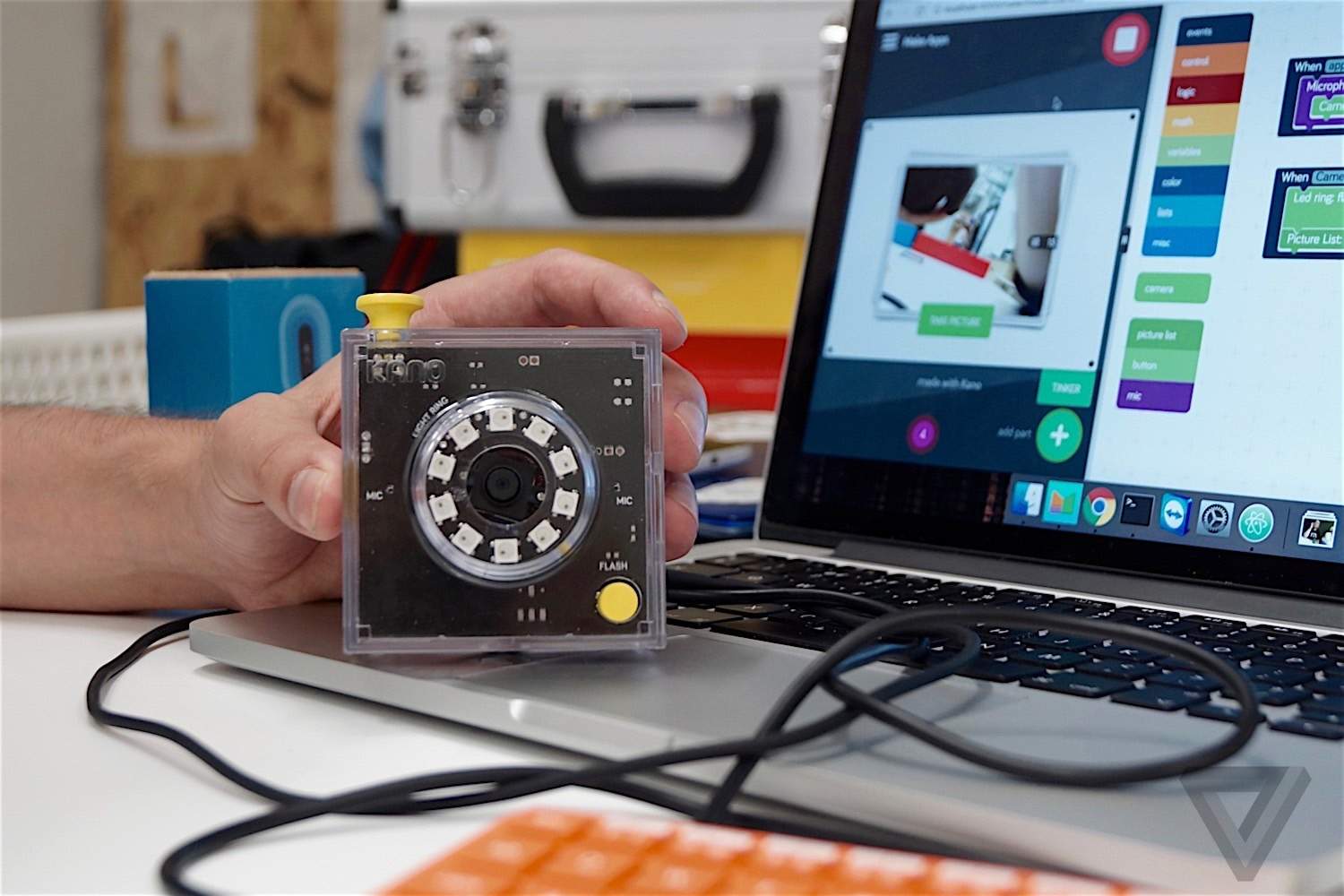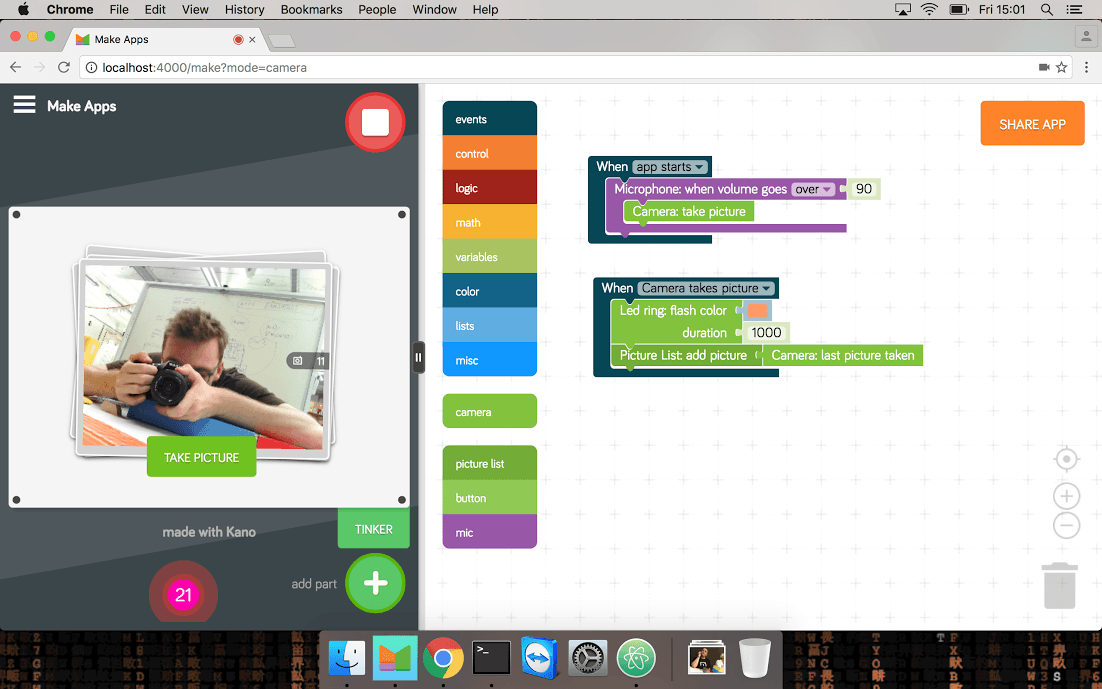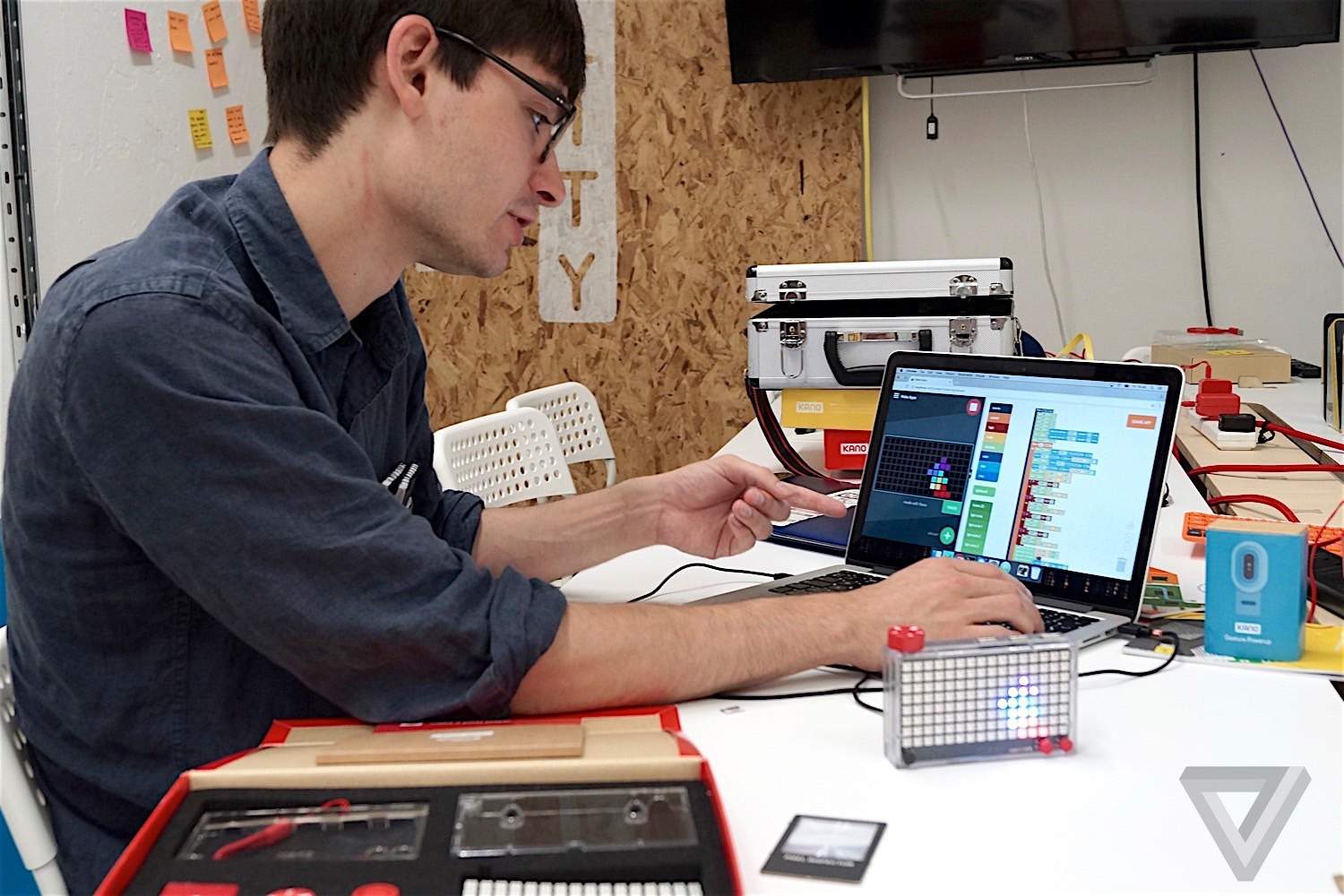DIY computer-maker Kano is moving into the internet of things. The British startup has announced a new Kickstarter campaign for a trio of gadgets designed to let children (and adults) build their own speakers, cameras, and pixelated LED displays. Fancy making your own motion-sensitive security camera? Or a speaker that farts every time your favorite team scores? It’s possible — and easier than you think.
“The original Kano in 2013 was all about making your own computer, coding your own art, apps, and games,” Alex Klein, Kano’s CEO and co-founder, tells The Verge. “But this time it’s about taking you back into the physical world. Step by step you make a device. You learn how it works. We want to make computing physical again!”
Klein demonstrates this at Kano’s London offices, showing how the new kits are put together. Like the first Kano, they arrive in parts and are assembled without tools in a matter of minutes. (This doesn’t teach any practical skills, but encourages the proper mindset: that electronics are there to be taken apart and put together.) In news that might dishearten some fans, the modules are no longer powered by the Raspberry Pi but custom-built chipsets, which Klein says is for cost reasons (MSRP for the kits is $129). But as with all of the company’s previous products, the design is still open and inviting, with simple modules, bold colors, and easy-to-follow manuals.
Klein walks me through a couple of projects, first assembling the camera and then slotting a motion sensor into the top. He brings up the company’s coding software, Kano Code, and starts inputting instructions. “It’s now possible,” he says, “because of the rise of low cost chipsets and abundant, connected computing, to have the powers it would have taken you two computer scientist degrees in the past to absorb.”
Kano Code is a simple drag-and-drop environment, with a library of predefined actions that appear as jigsaw pieces. There are lots of If-This-Then-That-style commands available, and users simply slot together the code on-screen. So for Klein’s first demo, he just drops in the pieces for: When [App Starts] + Microphone volume goes over [90] Then [take picture]. I clap my hands in front of the camera. It takes my picture.


It’s deceptively simple software. Although on the surface it’s just drag and drop, the underlying code is built on Javascript. Users can look inside each puzzle piece to view and tweak the specific instructions, and by the time the new kits are ready to ship (around the holidays) it’ll be possible to design your own modules, creating a library of actions.
And unlike the original Kano OS, Kano Code is also available as a web app, meaning it can be used on pretty much any device. (Mobile access is possible but trickier on smaller screens.) The kits themselves also work as standalone units, connecting to computers over Wi-Fi and USB, and their sensors are interchangeable. The end result is an ecosystem that’s both self-contained and open — advanced users can easily start transferring the coding skills (and hardware) over to other, non-Kano projects.
It’s worth pointing out that this is not an original pitch, and that rival firms like littleBits offer a greater array of sensors and more ambitious projects for users. But Kano’s advantage is its slick integration of hardware and software, making it just so entertaining to use the new kits.
After Klein has finished with his camera demo, he moves onto the Pixel Kit (“my absolute favorite”); a light board comprised of 128 individual LEDs that can show some 1.7 million colors. He plugs it all together, and starts coding a sequence of flashing lights. “You can do it pixel by pixel, or you can drag in an animation. Add frames, subtract frames, or just draw in what you want to see.”


As he builds the code, the lights in front of us change too, and with a few mouse clicks he’s set all 128 LEDs strobing, changing color with each flash. “Wow, that’s a mess,” he says, shutting the whole thing off, then dragging in the microphone functionality built into the new chipsets. A few puzzle pieces later and the light board is now sound-sensitive, flashing when we speak. Klein opens up YouTube in another tab on his laptop and starts playing Kanye West’s “All Of The Lights.” The LEDs in the pixel board dance in time. “Pretty appropriate, right?” he says, grinning.
It’s tricky to convey how different this experience feels to the original Kano. You can say it simply: it brings coding off the screen and into the physical world. But seeing this happen in real time is genuinely delightful. You change something on the screen and the thing in front of you changes with it! My past experience with coding usually boils down to frustrating moments hunting around for unclosed tags, but Kano’s offering is much more robust. Okay, so if you’re not as experienced as Klein this is likely to be a slow and halting process, but this sort of live feedback is instructive for learning too.
When I ask Klein what he thinks about society’s current relationship to technology, it’s clear how Kano’s kits fit into his worldview. “It bothers me,” he says. “We’re all walking around with these perfectly polished, sealed monoliths, being shown things the algorithm agrees with. But we’re never challenged, and we don’t know how it all works.”
Klein says Kano’s motivation isn’t to teach every child to code so they can work for Facebook when they grow up, but to instill a sense of curiosity about electronics, as well as helping give you people the permission they might feel they need to tinker in the first place. “We spend so much our days immersed in these devices,” he says, nodding at my smartphone. “These things dictate so much about my identity, my social group, my profession. Shouldn’t I have some control over the way it works?”